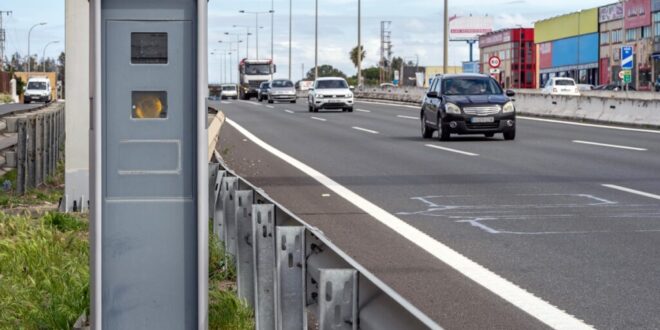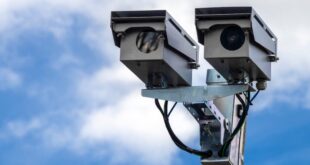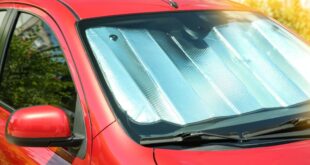Spanish road safety is now being monitored by new generation speed cameras such as these, which monitor both directions.
Credit : Rafa Jodar Shutterstock
It’s time to say goodbye to the days when you could spot speed cameras from a distance and hit the brakes in just the right moment. The DGT (Spain’s General Directorate of Traffic) has started rolling out a new breed of radar that’s changing the rules of the road and, frankly, making it nearly impossible for even the craftiest speeders to slip through the net.
Spain is now experiencing a new era in bidirectional speed cameras
Radars that are the latest DGT models don’t just watch from one side. The new radars are bidirectional so they can catch you either coming or moving. What about the old trick of slowing your speed down for the camera, and then accelerating as soon as you pass it? Now, it’s completely useless. They are useless.
Spain has already installed 122 of these cutting-edge cameras in hot spots like Castilla y León, Valencia, and Andalucía. The cameras are fixed as well as “section” speed camera. What sets them apart is a powerful combination of high-resolution imaging and artificial intelligence, which doesn’t just spot your speed — it can distinguish between types of vehicles, account for poor weather, and cut down on those unfair tickets that used to drive everyone mad.
AI powered rain or shine day or night
These radars are inspired by the latest tech used across Europe and have proven their worth in challenging tests — rain, sudden lane changes, you name it. These radars are out 24/7, rain, shine, day, or night. They use infrared light to capture a clear image even at night. The idea is to keep speeders under constant pressure, not just when the sun is out or on busy motorways. It is important to maintain pressure on speeders, and not just on sunny days or busy motorways.
In Spain, about 3,000 DGT cameras are in operation: 2,000 fixed, hundreds section and mobile cameras and dozens of others that watch for drivers using their phones or not wearing a seatbelt. The new bidirectional versions are a big step forward. They don’t only catch you when you come; they continue to watch your driving even after you pass, closing loopholes that clever motorists used to rely upon.
Speed cameras with wings — and a purpose
Think again if you think you can hide in the quiet countryside. The DGT’s “vololáser” mobile radars can be moved wherever they’re needed and even fitted to Pegasus helicopters, swooping over rural or secondary roads where permanent cameras just aren’t practical. The result? You have nowhere to run.
Here’s an interesting statistic: More than 80% violations are caught by new cameras just after drivers pass a fixed radar. Drivers slow down for the old camera, then immediately speed up — but the new tech is there, waiting for them. DGT is increasing its rollout to prevent dangerous driving, and not simply to increase fines.
Why speeding can be more dangerous than you thought
Why is this happening? The Spanish road system is still plagued by speeding, which remains one of its most deadly habits. The faster you’re going, the less time you have to react to surprises — a child running out, a car stopping suddenly, an obstacle in the road. As you increase your speed, your braking distance increases. On foggy or rainy days, this risk is magnified.
It is also much easier to lose your control at high speeds. At 100 km/h, a sharp turn or sudden halt is very different from the same maneuver at 60 km/h. At higher speeds, your field of view shrinks. This makes it more difficult to see pedestrians, cyclists and other hazards.
Shortly, these cameras don’t simply aim to catch out drivers. These cameras are an important part of the effort to make Spanish road safer for all.
Driving in Spain: The future is now
With thousands of cameras — and more being added all the time — the DGT’s message is clear: stick to the speed limit or expect a ticket, no matter where you are or what time it is. With fines increasing and technology improving, it’s never been better to take the safe route home.
Spain’s bidirectional radars: you can run but not hide. It’s better to be safe than sorry.
 Costa News Spain Breaking News | English News in Spain.
Costa News Spain Breaking News | English News in Spain.





